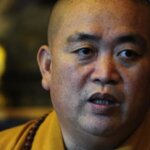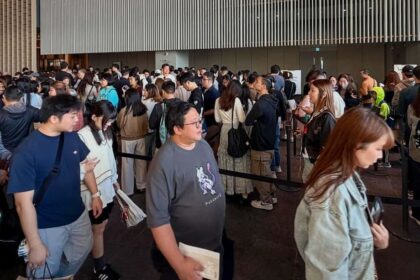China’s New Childcare Subsidy: A Policy Meant to Boost Birth Rates
China has launched a nationwide childcare subsidy program, offering parents 3,600 yuan (about $500) per year for each child under the age of three. The policy, effective retroactively from January 1, 2025, is the first of its kind at the national level and is designed to address the country’s rapidly declining birth rate and aging population. However, the program’s strict eligibility requirements—particularly the exclusion of children born out of wedlock—have ignited a heated debate about fairness, social values, and the future of family policy in China.
- China’s New Childcare Subsidy: A Policy Meant to Boost Birth Rates
- What Is the Childcare Subsidy and Why Was It Introduced?
- Eligibility Criteria: The Marriage Requirement and Its Consequences
- Single Mothers in China: Legal and Social Barriers
- Will the Subsidy Work? The Limits of Cash Incentives
- Broader Implications: Social Values, Gender, and the Future of Family Policy
- In Summary
What Is the Childcare Subsidy and Why Was It Introduced?
China’s demographic challenges are stark. The country’s birth rate has plummeted in recent years, with only 9.54 million babies born in 2024—half the number recorded in 2016, the year the one-child policy ended. Marriage rates have also reached historic lows, with just 6.1 million registered marriages in 2024, a 20.5 percent drop from the previous year. Meanwhile, the population is aging rapidly, raising concerns about the sustainability of the pension system and the future of the workforce.
To counter these trends, the Chinese government has shifted from decades of restrictive family planning policies to a suite of pro-birth incentives. The new childcare subsidy is a centerpiece of this effort. According to the official announcement, the subsidy is available to families for each child under three who was “legally born and holds Chinese nationality.” The payments are exempt from income tax and are not counted as income for social assistance purposes. The program is expected to benefit more than 20 million families annually.
Local governments have also introduced their own incentives, such as Hohhot’s one-off payment of 10,000 yuan for the first child and annual subsidies for additional children, and Shenyang’s monthly payments for third children. These measures are part of a broader strategy that includes expanding parental leave, improving childcare services, and promoting free preschool education.
Eligibility Criteria: The Marriage Requirement and Its Consequences
While the subsidy is widely seen as a positive step, its eligibility rules have become a flashpoint. To qualify, applicants must provide documentation proving the child’s identity and the parent-child relationship, as well as a marriage certificate. Children born out of wedlock are, in most cases, excluded from the subsidy.
This policy came under scrutiny after a single mother in Chengdu, Sichuan province, publicly questioned whether her child, born outside of marriage but legally registered, could receive the subsidy. Authorities responded that benefits are “based on family units” and require marriage registration. In cases of divorce, the parent with custody can claim the benefit, but unmarried parents are not eligible.
The case quickly went viral on Chinese social media, with thousands of netizens debating whether the policy is fair. Some argued that the subsidy should be tied to the child, not the marital status of the parents, especially as single parenthood is on the rise in China. Others supported the strict requirements, citing the need to uphold traditional family values and prevent misuse of public funds.
According to the Asia News Network, one netizen wrote, “The subsidy is for childbirth, not marriage. Why can’t it be claimed?” Another pointed out that “if the policy is aimed at boosting the birth rate, the subsidy should be given to the child, not tied to marriage.”
Single Mothers in China: Legal and Social Barriers
The exclusion of single mothers from the childcare subsidy is not an isolated issue. For decades, China’s family planning policies have made life difficult for unmarried women who wish to have children. Under the old one-child policy, single women were routinely denied birth certificates for their children, who would then struggle to access education and healthcare. Unmarried mothers could also face hefty “social maintenance fees”—fines for violating family planning rules—that could amount to several times the average annual income.
Although some provinces have relaxed these penalties in recent years, significant barriers remain. Single women are still banned from using assisted reproductive technology, and social stigma against single mothers persists. According to a BBC report, some women have even traveled abroad to freeze their eggs, as this option is not available to unmarried women in China.
There are an estimated 30 million single mothers in China, and their numbers are rising as divorce rates increase and more women choose not to marry. Yet, as the recent debate shows, government policy continues to favor the traditional nuclear family, leaving single-parent households with fewer resources and support.
Expert Perspectives and Public Reaction
Experts and commentators are divided on the issue. Some argue that the marriage requirement is outdated and counterproductive, especially given the government’s stated goal of boosting the birth rate. Others maintain that the policy reflects deeply rooted social norms and is unlikely to change without broader shifts in public attitudes.
Wang Haidong, director of the Department of Population Surveillance and Family Development at the National Health Commission, stated at a news conference that applicants would only need to submit essential documents proving the child’s identity and the parent-child relationship. However, local authorities have interpreted “legally compliant childbirth” as requiring a marital relationship, leading to confusion and inconsistent implementation across provinces.
One single mother in Shenzhen, after being denied the subsidy, wrote online, “My child is registered according to the law… It means the childbirth is fully recognized.”
Her post sparked widespread discussion, with many netizens calling for the policy to be revised to include single parents. Some argued that the government’s focus on marriage is at odds with the reality of modern Chinese society, where more people are choosing to delay or forgo marriage altogether.
Will the Subsidy Work? The Limits of Cash Incentives
While the childcare subsidy is a significant policy shift, many analysts are skeptical that it will be enough to reverse China’s demographic decline. The cost of raising a child in China is among the highest in the world relative to income. A study by the YuWa Population Research Institute found that raising a child to age 17 costs an average of $75,700, with costs in major cities like Shanghai exceeding $140,000. The annual subsidy of $500, while helpful, covers only a fraction of these expenses.
Young Chinese adults cite a range of reasons for delaying or avoiding parenthood, including high housing prices, job insecurity, and intense pressure to provide a good education for their children. Many women also point to the lack of workplace protections, limited parental leave, and persistent gender inequality as major obstacles.
June Zhao, a 29-year-old from Beijing, told CNN, “The high cost and low returns of raising a child, along with intense pressure, have influenced my decision not to have children.”
International experience suggests that cash subsidies alone are rarely enough to significantly boost birth rates. Countries like Japan and South Korea have implemented similar policies with limited success, as deeper social and economic factors continue to discourage family formation.
Local Innovations and Broader Family Support
Some local governments in China are experimenting with more generous incentives and broader support for families. Hohhot, for example, offers up to 100,000 yuan per child for families with three or more children, paid out over several years. Other cities provide free milk for new mothers or extend parental leave. These measures, while innovative, are often limited by local budgets and may not be sustainable nationwide.
Experts argue that a comprehensive approach is needed, integrating cash subsidies with expanded childcare services, affordable housing, workplace protections, and efforts to reduce gender discrimination. The UNICEF report on family policies in China emphasizes the importance of inclusive and sustainable support systems that address the needs of all families, regardless of marital status.
Broader Implications: Social Values, Gender, and the Future of Family Policy
The debate over the childcare subsidy highlights deeper tensions in Chinese society about gender roles, family structure, and the role of the state in private life. For decades, government policy has promoted marriage and traditional family values, often at the expense of women’s autonomy and single-parent households. The new subsidy, while a step forward in some respects, continues to reflect these priorities.
Feminist activists warn that policies aimed at boosting the birth rate may inadvertently increase pressure on women, both at home and in the workplace. Some fear that women will be seen primarily as tools for meeting government population targets, rather than as individuals with their own aspirations and rights.
Feminist activist Lü Pin argued, “Under the two-child policy, China’s women are still treated as tools for meeting the government’s population targets.”
At the same time, the growing number of single mothers and changing social attitudes suggest that the traditional model of the family is evolving. As more women choose to delay marriage or raise children on their own, there is increasing pressure on policymakers to adapt and provide support for diverse family structures.
In Summary
- China’s new nationwide childcare subsidy offers 3,600 yuan ($500) per year for each child under three, aiming to boost the country’s declining birth rate.
- The policy requires applicants to provide a marriage certificate, effectively excluding most single mothers and children born out of wedlock.
- The exclusion of single mothers has sparked widespread debate, with critics arguing that the subsidy should support all children, regardless of their parents’ marital status.
- China faces significant demographic challenges, including a shrinking and aging population, low birth and marriage rates, and high costs of childrearing.
- Experts warn that cash subsidies alone are unlikely to reverse these trends without broader reforms, including expanded childcare services, workplace protections, and support for diverse family structures.
- The debate over the subsidy reflects deeper tensions in Chinese society about gender roles, family values, and the role of the state in private life.












